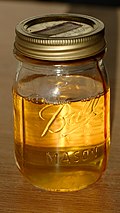**Production and Extraction:**
– Turpentine is derived from coniferous trees, with pine trees in North Carolina historically tapped for sap.
– The process involves tapping into sap layers to collect crude turpentine, which can be converted to oil of turpentine through steam distillation.
– Gum turpentine may refer to crude turpentine, and wood turpentine can be obtained from shredded pine stumps, roots, and slash.
– Crude sulfate turpentine is condensed from gas in Kraft process pulp digesters, with an average yield of 5-10kg/t pulp.
**Industrial and End Uses:**
– Turpentine serves as a solvent for oil-based paints and varnishes, though petroleum substitutes have become more common.
– It is used in furniture wax when mixed with other waxes and as a source of raw materials for fragrant chemical compounds.
– Spirits of turpentine were historically used as lamp fuels, and it is still found in products like Vicks chest rubs.
**Medical and Health Applications:**
– Turpentine has a history in folk medicine, being used for wounds, lice treatment, chest rubs, and enemas for constipation.
– It is added to cleaning products for its antiseptic properties, but ingestion or inhalation can lead to serious health issues.
– OSHA and NIOSH have set exposure limits for turpentine due to its hazardous effects on the skin, lungs, and central nervous system.
**Hazards and Safety Regulations:**
– Turpentine vapors can irritate skin and eyes, damage the respiratory system, and affect the central nervous system.
– Ingestion can cause burning sensations, abdominal pain, nausea, vomiting, confusion, and respiratory failure.
– Legal exposure limits for turpentine have been set by OSHA, with recommendations from NIOSH to prevent adverse health effects.
**Related Concepts and References:**
– Turpentine is historically linked to the naval stores industry and can cause damage to the renal system if ingested.
– It is classified as a common organic solvent and is subject to communication of hazards through systems like the firediamond system.
– References include sources like the GESTIS Substance Database, industrial chemistry handbooks, and materials on natural resins in art and archaeology.
Turpentine (which is also called spirit of turpentine, oil of turpentine, terebenthine, terebenthene, terebinthine and, colloquially, turps) is a fluid obtained by the distillation of resin harvested from living trees, mainly pines. Principally used as a specialized solvent, it is also a source of material for organic syntheses.
 Turpentine distilled at the Georgia Museum of Agriculture & Historic Village as it was done circa 1900
| |
| Identifiers | |
|---|---|
| ECHA InfoCard | 100.029.407 |
| EC Number |
|
PubChem CID
|
|
| UNII | |
CompTox Dashboard (EPA)
|
|
| Properties | |
| C10H16 | |
| Molar mass | 136.238 g·mol−1 |
| Appearance | Viscous liquid |
| Odor | Resinous |
| Melting point | −55 °C (−67 °F; 218 K) |
| Boiling point | 154 °C (309 °F; 427 K) |
| 20 mg/L | |
| Hazards | |
| NFPA 704 (fire diamond) | |
| Flash point | 35 °C (95 °F; 308 K) |
| 220 °C (428 °F; 493 K) | |
Except where otherwise noted, data are given for materials in their standard state (at 25 °C [77 °F], 100 kPa).
| |
Turpentine is composed of terpenes, primarily the monoterpenes alpha- and beta-pinene, with lesser amounts of carene, camphene, limonene, and terpinolene.
Substitutes include white spirit or other petroleum distillates – although the constituent chemicals are very different.

